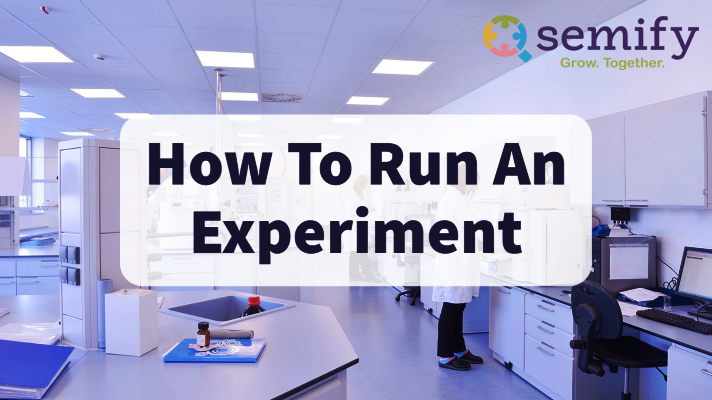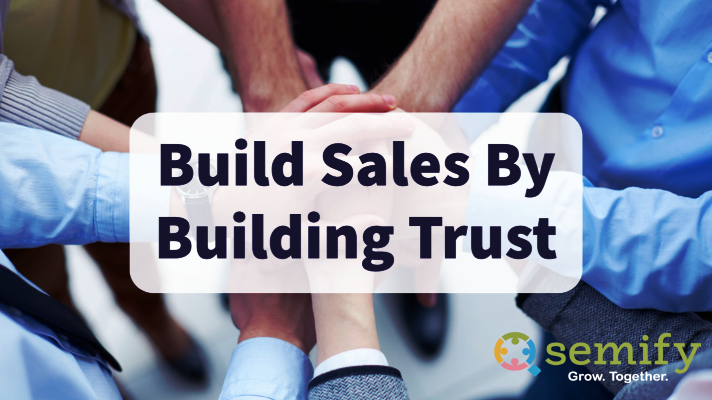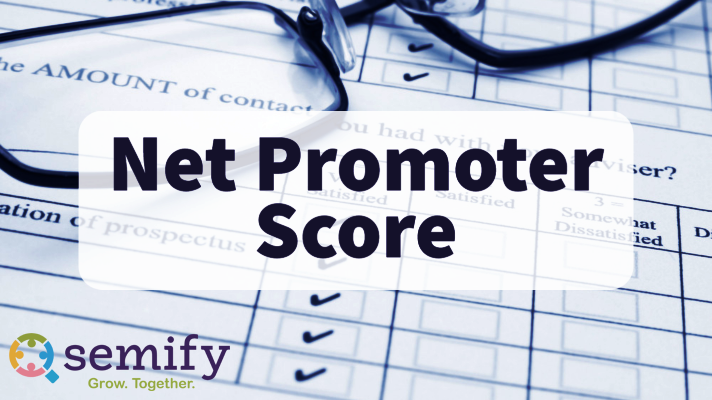For our agenda for today, we’re going to discuss what we believe as a company. And that’s part of the reason why we made this seven figure agency roadmap video for you. We’re going to discuss how to model key assumptions in your business plan to help you grow digital agency revenue consistently. Next, we’ll talk about how to create an innovation engine at your firm as part of creating a digital marketing agency focused on learning. Then, we’ll target how to jumpstart sales if your firm’s revenues are stalled out. And lastly, we will review how to generate meaningful customer feedback that fuels growth within your organization.
Seven Figure Agency Roadmap
The first stop on our seven figure agency roadmap is to help you understand our “why.” We believe that growing together creates the freedom to be more, do more, and have more. We believe that we accomplish more together than we can separately. We also want to help you reach your true potential as an agency..
We see so many firms that are really good at customer service are super knowledgeable about SEO, paid search, social media management, but they just can’t get their revenue moving forward consistently year over year. So we want to help you fix those blind spots that are holding you back so you can grow your agency consistently. If you implement these steps, you will grow agency revenue — I promise.
Let’s go through business model assumptions. We’re going to talk about how to model these assumptions to build agency success. And what we want you to use is our business model assumption spreadsheet. We believe it provides a holistic view of how you generate revenue and how you lose revenue. We’re going to show how you can adjust assumptions that affect your business plan. It will help reveal if your model’s broken — and if it is, where to fix it so you can build agency revenue in the long term.
Now, in terms of how to use this spreadsheet, we’re going to jump to that in a minute. But before we do, you can see over here in column B that we have inputs. These inputs will allow you to understand what the effect will be on your revenue one year or two years out. We definitely encourage you to play with those inputs and make a separate tab for each team member and let them problem-solve. Let them jump in and take ownership of that because that’s where the magic happens. For example, if you had an employee who said, “Hey, I’m the salesperson. I think I could increase revenue from say, for example, this $700 level to $1,000, if that would get us where we need to be.” And the same thing, if it’s for retention, maybe the account management team might say, “we could really positively impact customer retention by implementing something.” And we’re going to talk about how to implement those new strategies later, it’ll be a little teaser.
Lastly, before we jump into the spreadsheet, I want you to understand why we use median and not the average customer revenue data. You can see here the average revenue in these sales. We use median because an average can be deceptive when trying to learn what you need to grow agency revenue. So for example, let’s say that you have 10 customers who are generating $1,000 a month, and then you have an 11th customer that is generating $10,000 a month. So if you divide $20,000 by 11, you get $1,818. Well, if you use that as the average, you would think that the average customer is worth $1,800 — when in reality, it’s really $1,000. And the $10,000 customer is a bit of an outlier. So it is more important you know that you’ll be able to reliably bring on $1,000 customers, not so much $1,800 customers. So we’re going to stick with that.
Business Model Assumptions
So let’s show you what this business model assumption spreadsheet looks like and how to play with it. As you can see here, we use sales qualified leads as an input. So let’s say that lead costs your firm $200 to generate. That is an input. That’s a cost that’s going to negatively impact the amount of revenue you’re generating, obviously. The more leads cost to generate, you can factor that in to determine how that impacts revenue. Then, we can model out how many new customers a month you’re getting right now. Maybe it’s only five right now. So we need to look at that. And we’d like it to be 10. We can play with that.
Now, next average revenue or use the median. I should say median revenue and months, one through three is going to be at $700 and median revenue in once four plus at $1,000. So we want to have a revenue growth goal, in this case of increasing it by $300 over the first three months through some cross-selling, and then lastly, customer retention. We want them to be 95%. And that’s what we shoot for. So if I wanted to play with this… And as you can see here in month one, obviously we have $700 because we have one customer. But if we keep going, you can see over time that if we follow this model, that we will have $352,547 in annual revenue at that point. So that’s month 24. That’s two years out. You can see we just made this right here. The 12 month mark is $41,000. So you can really snowball and grow digital agency revenue.
If we’ve made an assumption change here and we moved this to 10, we doubled our customers. We can definitely see what impact that has when building a marketing agency for growth. We can also change the ad revenue from, say, to $900. And that takes that revenue up a little bit. And then let’s say customer revenue then went to $1,500. You can see that adds up to over a half-million dollars in revenue. So each one of these inputs can be changed up or down. And then what I always ask people to do is have each team member have their own tab. Let them play with these numbers because if they’re an account manager, they’re going to care a lot more about the revenue in month four as their job, once it comes through sales.
And then in terms of customer churn, same thing. The account management team’s going to care deeply about that. Whereas your marketing team’s going to care about cost per SQL and new resellers per month, that would be your sales team. So this is pretty comprehensive. You could change the labeling on these. You could add variables. However, the big thing to do is to sit down alone as the owner, perhaps at first, and then with the team and really have them go through this. And I think you’ll be surprised that people will start taking ownership of these numbers in a way that will surprise you. Building a digital marketing agency for long-term growth really is a team effort, so involving your team in this way can have a huge impact.
Grow Your Agency Through Innovation
Let’s jump back into the presentation. Now, we’re going to talk about the innovation engine. We recommend that you put in an “innovation engine” at your firm, which is what we did. We read two books, one called The Lean Startup and the other called The Startup Way. Both were written by Eric Ries. You can pick them up on Amazon or local bookstores. These books provide a framework for entrepreneurship and they allow your company to rewrite your DNA to become innovators. And what they focus on is finding a repeatable method for finding new breakthroughs consistently. So whenever you want to introduce a new product, you’re going to do that through running experiments. And when those experiments validate, we call that validated learning. Once you have validated learning, you can then scale that product. We’re going to show you what that looks like later in the slides and also give you a couple of examples right here.
So you can see here, we had NPS, that’s net promoter score. So we will talk about that. We did some experiments on our net promoter score. Those experiments led to over a hundred changes in our reseller dashboard. They also led to dozens of process changes. And there were product changes in a number of other things, as well. And that, in turn, brought our net promoter score way up, which was formerly stuck at three. And I will talk about how to interpret those scores. Our NPS score now consistently ranges from the 50s to the 70s. So that was a huge turnaround for our company. And if you overlay our revenue over our net promoter score, they are highly correlated. When you’re trying to figure out how to grow marketing agency revenue, you may want to take a closer look at your NPS.
Building a Marketing Agency With Innovation
Next, we also created matrix teams. This is how we organize ourselves and do our work. We used to have a writing team, a web team, a sales team, an account management team, a local SEO team, a PPC team, et cetera. Through experimentation, we changed this setup to have a cross-functional team that we call a matrix team. The new teams, rather than having all our PPC analysts siloed off, the account managers siloed off, and so on and so forth, we changed it. We now have an account manager, writers. We also have PPC, a web team, all together in a cross-functional team, graphic design, all that kind of stuff into one cohesive team. Not only did employee satisfaction increase, because they could switch up what they’re doing during the day once in a while, but it also led to better outcomes. Less revenue was required on the part of labor. So we saved money and created better outcomes. It was a tremendous experiment that worked out to be one of our most successful experiments. In creating a digital marketing agency focused on growth, that could mean fundamentally changing how you work. But you need to discover that through innovation and experimentation to have validated learning.
I want to emphasize that before you build anything, before you introduce a new product, you need to get a customer in the room. If you are going off ideas that you think are good, it doesn’t always work. We used to introduce products that way and we wound up falling flat on our faces. We now only build something if a customer is asking for it. And in our case, many customers are asking for it. So those are the basics here. Let’s continue on.
This is how you’re going to implement innovation at your firm and to get out of the building to get ideas. That’s the saying in lean startup terms. “Getting out of the building” means talking to customers — because even though you may get good feedback from them or ideas from them, we want you to then test those ideas or test those assertions customers are making. They may tell you they’re going to buy something, but in reality, they won’t. So then you’re going to measure those behaviors. If a customer said, “I would buy your SEO plan if it included link building.” You could then introduce a link building to a plan and then see if they buy it, right? Super simple.
Now, next, here is a little bit of a loop you want to achieve here. You want to do it with the minimum of effort. So for example, you create a minimum viable product. So let’s just say in this case, you’re going to introduce a social media management product. Well, you don’t offer one today. That’s okay. I want to tell you that you can find out if people will buy that product without hiring a social media analyst, without buying software like Hootsuite, or any of that. All you have to do here is minimal: create a sell sheet to show customers what would be on the product. So it would just be a nice glossy thing or a really good looking document in Google docs and give it to the customer, make a presentation and see if people buy it.
Because if no one buys the product, guess what? Everything else you would have done — the hiring, the buying, the software, all that stuff — is a complete waste. Because guess what? In the end, maybe no one’s going to buy it. So that’s super minimal. And that’s what I mean by reducing waste. Don’t get too crazy. Make the sell sheet super easy, for example, or whatever that minimum viable product is. If you’re going to create software that would help with local rankings, do it manually first; then, we can create the software after it validates.
So you may be thinking, well, how do I run those experiments? Well, this is the process that we use every day. We’ve run literally hundreds and hundreds, if not over a thousand experiments, and invested nearly hundreds of thousands of dollars of employee time in running experiments. So step zero, I already mentioned this one. I’d like you to buy the Lean Startup book and the Startup Way. Next, assign someone to be the innovation leader. Now that may need to be you in the beginning — or if you have someone on the team who has always got great ideas, they’re always interested and curious people, ask them to be the innovation leader. Next, I’d like you to hold regular meetings to track innovation progress. So making sure that people are executing the experiments properly, making sure that they’re reviewing the results, all that kind of stuff. And then step three, I want you to use this specify document. So we’ve used this for, like I said, countless experiments. I’m going to show you what that looks like in a moment. And then step four, you’re going to gather the customer data. So in our example, where we introduce a social media management product, we’re going to pitch it. Have our salesperson pitch that product. And then let’s say, we guess that out of 10 people that we pitch it to that two will buy. And then if that’s enough for the first round of experiments and if we get this thing to validate now (most likely, we’d want to revalidate that to make sure we have a really good finding), that would be a success.
Grow Your Digital Agency By Building Trust
And then as I mentioned, we’re going to specify another experiment using the information you gathered. You might have learned from that first experiment that people actually want you to do re-tweeting, for example, and you didn’t have that in the product. You can simply add that in the next version and see if that gets you from two sales to three. And if it does, boom. And what you want to see is a week-over-week improvement in those numbers. And you do that through gathering the feedback and then improving the product in this case and continuing to experiment.
So that’s really where we want to go. Let’s show you what the specify document looks like. This is our experiment document. In this case, we’re going to show you this in a moment, but we did a cool experiment called our premium on-site SEO project. And the agenda here is to review and execute the data. You want to create a bunch of learning goals. You want to learn, maybe in our case, if somebody buys a social media management product. Well, in this case, we wanted to learn if they would buy our premium onsite product. We had a guess that through this, working with a very large agency partner, that people would buy a one-time product that could show quick results.
So we then figure out what the riskiest assumption is, which is “F,” and then leap-of-faith assumption. So that we might’ve said, well, they want to know that our customer because we were working jointly with our reseller, that they want us involved in the process, that they were satisfied with the product, that our initial pitch inadequate sales and marketing materials. So that’s what we did. We needed materials. We built those. That’s what we ended up going with. We want to figure out, what do we need to get to have this be successful? And then here is our hypothesis. So just like a scientific experiment, you have a hypothesis. And in this case, if we give our resellers a more detailed proposal with keyword selections, then sales will increase. That was our hypothesis. And you’ll see why we did this one in some subsequent slides. And then our metrics were a number of premium on-site reports that we sold. Super simple. We made a cohort design. We wanted to include resellers who had previously sold the premium onsite product.
So we introduce this to those main resellers, some other resellers, and had them sell this product to their customers and see what happened. And we found that they were… Every agency we were able to introduce this to was able to sell this consistently well. And we did several versions of the experiment. So we needed 10 resellers minimum. In your case, that might be 10 customers. And so we had some rules there and then we made our minimum viable product. We just made a deck. And there’s a lot of data here. We had our experiment design. We didn’t want to do split testing. We did time series in this case, which is like a before and after,instead of an A/B split. And then the timeframe was three weeks. If less than 30% of resellers purchased a premium onsite, then the experiment will invalidate. So we had that happen. We had that happen. It worked well. So let’s go back into the experiment. And by the way, that version of that document will be available just like the spreadsheet was so you can use it for your team.
Next, we’re going to talk about how to jumpstart sales if your firm’s revenue is stalled out. So this is actually an experiment that we ran with, not only 10 agencies, but one in particular, because this is the firm that is a big customer of ours and their sales team was stuck. So they were stuck at $90,000 a month in sales, which is a big number. However, they just could no longer outsell their churn. At some point, you’ll see if you go back to that business model spreadsheet that everything’s related. You’ll see that at some point, it’s no longer possible to outsell your churn, you need to do something else.
They couldn’t improve close rates through contests and other measures. So they consulted with us. And we did a number of experiments. We joined the sales calls with their reps to find out what the customers were saying. Then, we found out their prospects did not have enough trust to commit to a six-month contract. Now at Semify, we don’t have a six month contract. However, they did. It made it riskier for a customer to invest at the six-month level. So we started running experiments. And what we came up with is what we call our premium on-site product, which is an a la carte SEO product, meaning there’s no contract. And we wanted that part to show results in a 30- to 60-day timeframe. Because we know SEO takes a long time. But with this product, what we did is we did is we did a before and after picture, we showed how many keywords they ranked on before we started (we use SEMrush data), and then we added marketing copy and metadata updates. Of course, the marketing copy, as you can see here, has a bunch of LSI keywords. There’s keyword research involved.
Once the marketing copy went up, we then took a snapshot of how many keywords they ranked on afterward at day 30 and then again at day 60. And it was not unusual to see keywords jump up from, say, 50 keywords to 113, or from 80 to 125. And the customers could see that measurable improvement. That built trust. And in turn, they were able to close 25% of those customers who had previously said no to ongoing SEO, helping them grow digital agency revenue overall.
They still were selling the same pitch where they were trying to sell the six-month deals. But when they said no, they said,” hey, we have this other thing.” And adding 25% on… I can tell you this. When they initially did this product, they made four sales and that was it. And then the next month they did 10. And then of the 10, again, 25% would come on board with our firm, which equated to around two or three accounts. And last I checked, they were doing 110 of these a month. And that is 25 or 35 accounts per month. And I’ve asked them repeatedly, “how are you guys growing so fast?” And they always say the same thing: “It’s this product. It’s really helped them move the needle.” So as you can see here, their sales grew from $200,000 in monthly sales in 14 months. If you annualize it, it’s $1.08 million, over $2.4 million. And now they’re actually well over $4 million in sales. Talk about building a digital marketing agency for incredible growth. But this is a more reasonable snapshot.
How Net Promoter Score Can Grow a Marketing Agency
Now I’m going to talk about how to generate actionable customer feedback to fuel growth in digital marketing. We did that through our net promoter scores. If you recall, we did this as an experiment. A net promoter score is a one-question survey, and it always has to be the same question. And I want you to use this exact language: “On a scale of zero to 10, how likely are you to recommend our business to a friend or colleague?”
Now, when I describe how the scoring works, as you can see here to the right, the score goes from zero to 10. Anybody who gives a score of zero to six is a “detractor.” Anyone who gives a score of seven to eight is “passive,” meaning neutral. Then nines and tens are “promoters.” So once people give those scores, they’re done. We then take those scores and look at them in the aggregate.
So, for example, let’s say you gave this survey to 10 people. And six people give you a promoter and four give you a detractor. What you would do is say, it’d be the rather 60% minus the 40% you’d have a 20 net promoter score. 60 minus the 40. If, however, you had eight promoter scores, people will give you a promoter nine or a 10. And you had only 20 who gave you a detractor, then you’d have a 60 net promoter score. That’s how you do the scoring. And so the important thing when you implement these, and this is why I mentioned at the beginning of the video that it’s not a quick fix, you need to give these satisfaction surveys consistently. So if you have a large client base, you can do it monthly. Not every customer every month — randomly or you can do it any way you want. But a section of your customer base. If you have a small customer base, every six months is fine.
And the important thing is you have this data, you want to turn detractors into passives and passives into promoters. And that’s how you’re going to nudge that score up to grow your digital agency. So what we did is we created a net promoter response playbook. Here’s ours. If you get a bad score, we went to call those customers immediately and then use active listening. If you’re not familiar with active listening, that means you can ask them a question, and then you need to sit back and hear the answer. They may give you an answer. I don’t want you to stop there and say, “Great, we’ll fix it.” Instead, acknowledge what they’ve said and ask more questions, be very curious and write down everything they say, and then repeat it back. So you’re saying that this happened, “oh, I see. Well, how did that make you feel?” “Yeah, it was terrible.” And you hear it all. And then once they get off their chest, then you can ask (after they kind of get it off their chest), “how can we get a better score on the next survey?” And then you need to follow up and make it better.
How Customer Satisfaction Fueled Agency Growth
So here’s a case study we had. We call it the dumpster fire because that’s what our clients or just one customer called us. They were upset. And Amanda, our account manager for this reseller (who calls this incident “the dumpster fire,” along with the rest of our company) immediately got on the phone to hear that customer’s concerns. After this specific incident was resolved, the leadership team held weekly calls with that reseller to hear their complaints. And we worked intensely on our relationship with that company to build agency trust. And we created solid agendas for each meeting we went with that customer and practiced active listening during each call. In June of 2018, this reseller gave us a five on our net promoter survey. In August 2018, they gave us a 10. And now they’re expanding their SEO services with Semify. They were themselves actually having a lot of struggles and turnover internally. And we were able to help them turn that around and grow agency revenue together.
We helped them get into growth mode. They went from only doing maybe $1,000 a month in revenue to over $6,000 in monthly revenue through building trust and meeting with them. And additionally, they asked us for consulting, as I mentioned. This is a powerful procedure for you to build strong relationships and grow your agency while addressing your clients’ needs. Because the reality is sometimes the strongest relationships you can build are through adversity. When they come to you with a concern, you can use it to actually build a stronger relationship and I totally encourage you to do that as part of building a marketing agency that’s profitable and highly regarded. That’s all we have for today. Please implement these four steps, you will grow. I promise. Thank you so much for taking the time to listen. Take care.
___
by Matt Beaulieu
source:Semify
















